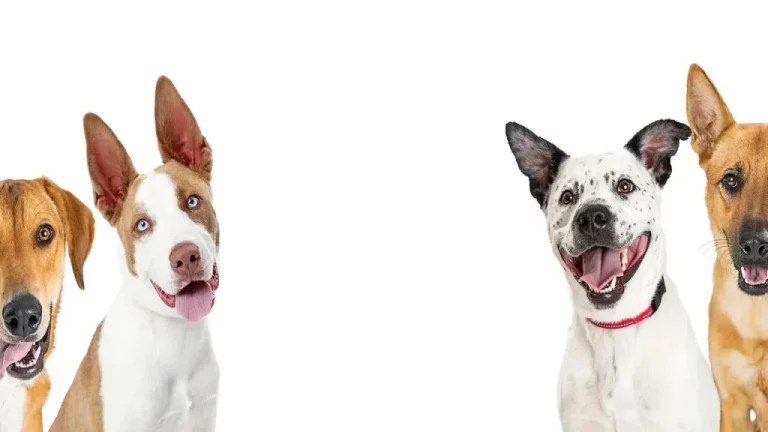<!-- Call Us Today at 470.979.8167 for Quality Mobile Grooming Services in Gwinnett & North Fulton--> Call Us Today at 470.979.8167 for Quality Mobile Services
Understanding Different Dog Breeds and Their Grooming Needs

Every dog breed has its own unique characteristics, and this extends to their grooming needs. While all dogs benefit from regular grooming, some breeds require more frequent attention and specialized care due to their coat type, skin sensitivity, or grooming challenges. Whether you own a short-haired pup or a long-coated companion, understanding your dog’s breed-specific grooming needs is essential for keeping them happy and healthy.
In this guide, we’ll break down the grooming requirements for different breeds, highlighting specific care tips for various coat types and how often you should groom your dog.
1. Short-Haired Breeds
Examples: Beagle, Boxer, Dalmatian, Bulldog Short-haired dogs have coats that are relatively low-maintenance, but they still need regular grooming to maintain coat health and reduce shedding.Grooming Routine:
- Brushing: While short-haired breeds don’t require frequent brushing, it’s still important to brush them weekly to remove loose hair and reduce shedding. A bristle brush or rubber grooming mitt works well for these breeds.
- Bathing: These breeds can be bathed every 4-6 weeks, but be sure not to over-bathe, as this can strip the natural oils from their skin.
- Nail Trimming and Ear Cleaning: Short-haired dogs need regular nail trimming and ear cleaning, typically once a month.
2. Double-Coated Breeds
Examples: Golden Retriever, Siberian Husky, German Shepherd, Shiba Inu Double-coated breeds have a soft undercoat for insulation and a tougher topcoat to protect them from the elements. These breeds shed more, especially during seasonal changes, making regular grooming a necessity.Grooming Routine:
- Brushing: Double-coated breeds should be brushed at least 2-3 times per week to prevent mats and tangles, and to reduce shedding. Use an undercoat rake or slicker brush to reach the undercoat.
- Bathing: Bathing can be done every 6-8 weeks, but during heavy shedding periods (spring and fall), you may need to bathe and blow-dry them more frequently to remove the shedding undercoat.
- De-Shedding Treatment: These breeds benefit from professional de-shedding treatments during shedding seasons to reduce the amount of hair they lose.
3. Long-Haired Breeds
Examples: Shih Tzu, Maltese, Yorkshire Terrier, Afghan Hound Long-haired breeds require more frequent grooming to keep their coats tangle-free and looking their best. Their hair grows continuously, much like human hair, making regular trims and brushing essential.Grooming Routine:
- Brushing: Long-haired dogs should be brushed daily to prevent mats and tangles, especially around sensitive areas like the belly, behind the ears, and the legs. A pin brush or comb works well for this coat type.
- Bathing: Bathing can be done every 4-6 weeks, with the use of a conditioning shampoo to keep their coat soft and smooth.
- Haircuts: Regular trims every 6-8 weeks are necessary to maintain their coat length and prevent overgrowth, especially around the face and paws.
4. Curly-Coated Breeds
Examples: Poodle, Bichon Frise, Portuguese Water Dog Curly-coated breeds have hair that grows in tight curls, which can be prone to matting if not groomed regularly. These dogs don’t shed much, but their curly coats require regular maintenance to prevent tangles and matting.Grooming Routine:
- Brushing: Curly-coated dogs should be brushed at least 2-3 times a week to keep their curls free of tangles. Use a slicker brush to gently detangle the coat.
- Bathing: Bathing can be done every 4-6 weeks, followed by blow-drying to fluff up the coat and keep it curly and manageable.
- Trims: Curly-coated dogs need regular haircuts every 6-8 weeks to maintain their coat length and shape. Many owners choose to keep their coats short for easier maintenance.
5. Wire-Haired Breeds
Examples: Schnauzer, Wire Fox Terrier, Irish Wolfhound Wire-haired breeds have rough, bristly coats that don’t shed much, but they require special grooming techniques to maintain their texture and prevent matting.Grooming Routine:
- Brushing: These dogs should be brushed weekly to remove dirt and debris. A slicker brush or bristle brush is ideal for keeping their coats neat.
- Stripping: Wire-haired breeds need to be hand-stripped every 3-4 months. Hand-stripping involves removing dead hair from the coat to maintain its rough texture and prevent matting.
- Bathing: Bathing can be done every 6-8 weeks, but be careful not to over-bathe as it can soften the texture of the coat.
6. Hairless Breeds
Examples: Chinese Crested, Xoloitzcuintli (Mexican Hairless), American Hairless Terrier Hairless breeds have little to no coat, but that doesn’t mean they don’t require grooming. Their skin needs special attention to stay healthy and free from irritation.Grooming Routine:
- Bathing: Hairless dogs need regular bathing, about once a week, to keep their skin clean and free of oils and dirt buildup. Use a gentle, moisturizing shampoo to prevent dryness.
- Moisturizing: Their skin can easily become dry, so apply a pet-safe moisturizer after baths to keep their skin hydrated.
- Sun Protection: Hairless breeds are prone to sunburn, so it’s important to apply dog-friendly sunscreen before spending time outdoors.
7. Sensitive Skin Breeds
Examples: French Bulldog, Shar Pei, Boxer Some dogs have more sensitive skin than others, and their grooming routine needs to be tailored to prevent irritation and discomfort.Grooming Routine:
- Brushing: For dogs with sensitive skin, use a soft-bristle brush or grooming mitt to avoid irritating their skin. Brush them 1-2 times per week.
- Bathing: Use a hypoallergenic, moisturizing shampoo to prevent dry, itchy skin. Bathing can be done every 4-6 weeks, depending on the dog’s activity level and skin condition.
- Skin Care: Pay close attention to any skin folds or wrinkles (such as with a Shar Pei) as these areas can trap moisture and lead to infections. Clean and dry these areas regularly.
